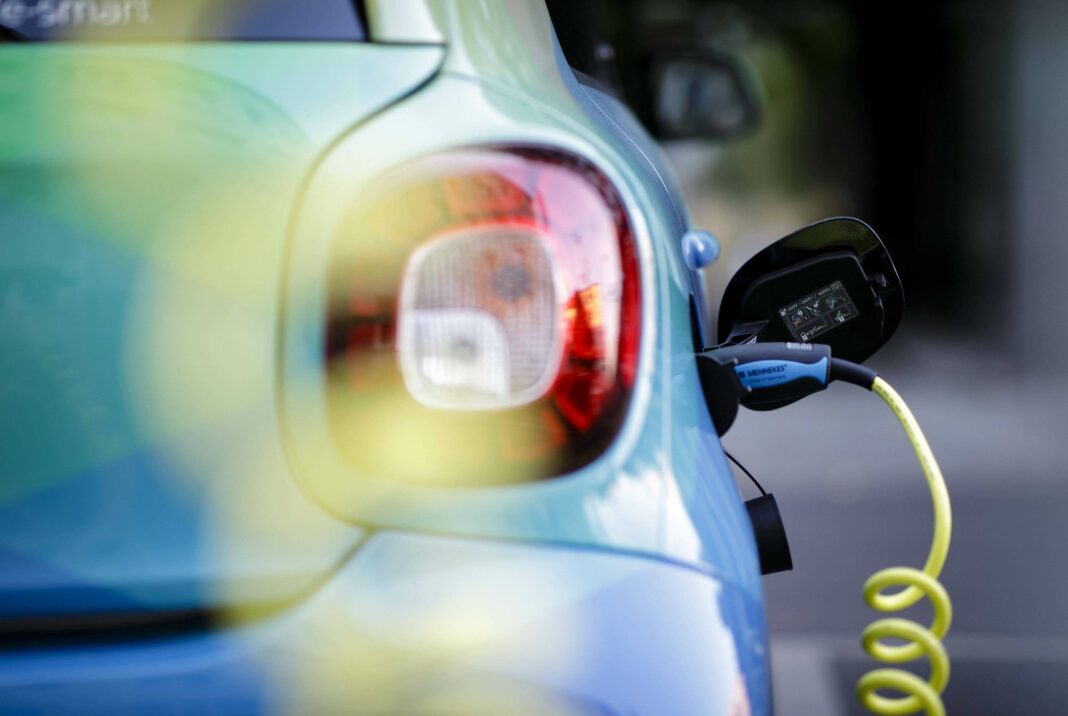Switzerland faces significant challenges in reducing greenhouse gas emissions from the transport sector, responsible for about 40% of its total emissions. While efforts in buildings have led to a 40% reduction, transport emissions have only decreased by 8% since 1990. Despite recent setbacks in electric vehicle market share, a report suggests that electric mobility will dominate by 2040, driven by improved technology and EU regulations mandating zero-emission vehicles by 2035.
To achieve its climate goals, Switzerland must focus on transforming its mobility sector, which is responsible for roughly 40% of greenhouse gas emissions.
Despite efforts, emissions from transportation have only seen a modest decline of 8% since 1990, in stark contrast to the 40% reduction achieved within the building sector. Several factors contribute to this discrepancy, including less heating demand due to global warming, improvements in home insulation, and a growing adoption of eco-friendly heating solutions like heat pumps.
To accelerate emissions reductions in transportation, it is crucial to transition from gasoline and diesel vehicles to sustainable alternatives, primarily electric cars.
The Future of Mobility: Battery Electric
After years of steady growth, the market share of battery-electric vehicles in Switzerland has recently seen a decline. This raises concerns about the country’s ability to meet its climate goals. However, a new report from the consulting firm EBP offers an unexpectedly optimistic outlook. According to their findings, the future of mobility will predominantly be “battery-powered.”
In a pessimistic scenario, EBP predicts that electric vehicles may claim 80% of the market by 2040, with nearly 80% of driving kilometers being electric by 2050. Conversely, if European policies tighten as anticipated, electric vehicles could reach almost full market saturation by 2040, leaving almost no fossil fuel cars on the roads by 2050.
Several factors contribute to EBP’s positive forecast. “The electric car simply outperforms the combustion engine in every aspect,” notes EBP expert Peter de Haan. Electric vehicles are more efficient, quieter, and ultimately cheaper over their lifespan.
Lower Operational Costs
In a recent analysis, EBP demonstrated that mid-range electric cars, such as the VW ID.3 compared to a Skoda Octavia, can result in savings of over CHF 10,000 over an eight-year ownership period. EBP expects this cost advantage to widen, primarily due to decreasing battery prices.
However, it’s important to note that electric cars may not be cheaper at the dealership than their gasoline or diesel counterparts. De Haan explains that while climate-friendly technologies may carry a higher purchase price, their operational savings are substantial. This often requires consumers and businesses to adjust their budgeting strategies, a shift that can be met with resistance.
EBP experts also highlight that sales of electric vehicles are likely to rebound. In 2025, the EU plans to tighten its CO2 targets, compelling European automakers and Swiss importers to boost their electric or hybrid car offerings to avoid penalties. De Haan notes that manufacturers are unlikely to meet these stricter targets ahead of schedule, making the sales stagnation towards late 2024 foreseeable.
Patterns Repeating
Bloomberg New Energy Finance concurs with this analysis. Expert Colin McKerracher notes that a similar decline in electric vehicle sales occurred in 2019 before stricter EU emission regulations were implemented in 2020, leading to a resurgence in sales.
According to McKerracher, European manufacturers have successfully met current emissions standards and currently lack the incentive to push electric vehicle sales. This strategy is evidenced by many manufacturers choosing to withhold affordable new models until 2025.
However, not all experts agree. Some believe that high sales prices compared to fossil fuel vehicles, limited driving ranges, and inadequate charging infrastructure continue to deter consumers.
De Haan suggests that these concerns can be viewed as excuses for inaction. Nonetheless, a variety of electric vehicles with competitive pricing and sufficient range—many capable of over 400 kilometers—are now available.
Continued Advancements Ahead
The driving range of new electric vehicles is improving, albeit at a slower pace than in earlier years. De Haan anticipates consistent advancements over the next 15 to 25 years, along with faster battery recharge times, reducing the downtime at charging stations.
Meanwhile, European automotive leaders are advocating for a relaxation of stringent climate targets. However, De Haan asserts that even if they succeed, it won’t alter the reality that electric mobility is the future. A critical factor is the EU regulation mandating no CO2 emissions from new cars and vans by 2035, effectively banning the sale of petrol and diesel vehicles from that time onward.
In contrast, De Haan does not see a viable future for hydrogen or hybrid cars. He views hybrids—vehicles equipped with both a battery and a traditional engine—as transitional. They could be practical from 2025 to
